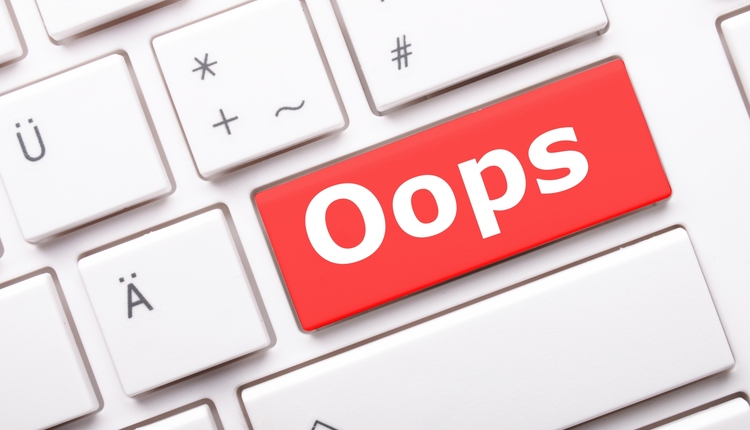
It has just been announced that the Postal Regulatory Commission has approved an exigent increase in pricing that will impact most mail by 6%. Back in November I had written about this as a potential, but thought now would be a good time to go over what we believe to be the specifics of the increase. (We are basing the rates below on what the USPS had published in the initial exigent request but slight modifications are possible in the final version.)
Postal rates are supposed to be tied to the Consumer Price Index, which today is running in the 1-2% range. The USPS needs their rates to be in line with this index except in the following circumstances:
1. Unused Rate Adjustment -- They did not adjust past rates to the full levels allowed.
2. Exigent Circumstances - They have drastic conditions that require them to raise rates to higher levels. We can all agree that with the huge deficits, this type of increase is easy to justify.
For the past 16 years, I have been creating comparison charts for my clients that go over the changes in rates to show how it will affect budgets. The reason that I do this is that when the USPS talks about a 4.3% increase, this is overall. Based on the type of mail you do, the increase could be higher or lower. You need to look at the class, weight, zone, density and special services required to see the true impact. Also, when you look at the new rate charts provided by the USPS, they typically will not show the level of detail needed (Previous and new rates, side by side) to see these differences.
The remainder of this article will look at the main classes of mail and will break down the specific increases. Hopefully this will help you budget for the increase by seeing how it will impact your mail.
First-Class Mail
Retail
Exigent Increase -- 3-12.1%
Postal rates are supposed to be tied to the Consumer Price Index, which today is running in the 1-2% range. The USPS needs their rates to be in line with this index except in the following circumstances:
1. Unused Rate Adjustment -- They did not adjust past rates to the full levels allowed.
2. Exigent Circumstances - They have drastic conditions that require them to raise rates to higher levels. We can all agree that with the huge deficits, this type of increase is easy to justify.
For the past 16 years, I have been creating comparison charts for my clients that go over the changes in rates to show how it will affect budgets. The reason that I do this is that when the USPS talks about a 4.3% increase, this is overall. Based on the type of mail you do, the increase could be higher or lower. You need to look at the class, weight, zone, density and special services required to see the true impact. Also, when you look at the new rate charts provided by the USPS, they typically will not show the level of detail needed (Previous and new rates, side by side) to see these differences.
The remainder of this article will look at the main classes of mail and will break down the specific increases. Hopefully this will help you budget for the increase by seeing how it will impact your mail.
First-Class Mail
Retail
Exigent Increase -- 3-12.1%

This could be a big impact for many entities. Not only do the first ounce rates increase significantly, but the second ounce rates go up as well from $.20 to $.21 ($.17 to $.18 for Parcels). You can clearly see the largest increases are for the lightest weight items. Finally, parcels are going up at the highest rates. My guess is because they are still a bargain compared to the private carriers.
One interesting change is a different rate category for Single Piece Metered Letters, where there will be a $.01 discount. It seems that the USPS is giving this rate break if you use a postage meter instead of a stamp. It is unclear if this will apply to PC postage, but this could be a great thing for the postage meter industry and for customers who use meters.
Commercial
Exigent Increase -- 4.3-11.1
Exigent Increase -- 4.3-11.1

Automation 5 Digit Flats are having some of the largest increases. This looks like the USPS realized they were giving too deep a discount for these items compared to the other sort levels. My guess is that we will continue to see the largest increases in this category. If you are using a presort service, this may affect the rates they are charging.
Standard Mail
Exigent Increase -- 3.8-10.8%

· It is interesting that when you look at the rates for both Standard Mail® and Non Profit, the largest increases are at the 5 Digit and Mixed AADC levels.
· Non automation rates seem to be going up at higher levels than automation for both Standard Mail® and Non Profit with the largest increases happening at the 5 Digit levels.
· Non automation rates seem to be going up at higher levels than automation for both Standard Mail® and Non Profit with the largest increases happening at the 5 Digit levels.

Special Services
Exigent Increase -- 0-16.7% 
Adam Lewenberg, CMDSS, MDC, President of Postal Advocate Inc., runs the largest Mail Audit and Recover firm in the United States. Their mission is to help entities with large numbers of locations reduce mail related expenses, recover lost postage funds, and simplify visibility and oversight. In 2013, they have helped their clients save an average of 63% and over $2.8 million on equipment, fees and lost postage. He can be reached at (617)372-6853 or adam.lewenberg@postaladvocate.com.

One item that I wanted to specifically point out is the cost of doing Certified Mail with Return Receipt. The price will now be $6.49 for a one ounce letter. At that price, it may be a good idea to check your 2-3 day rates with your private carriers to see if they are less money. Also, consider switching to the Electronic Return Receipt which saves $1.32 each.
Who knows how long this increase will be around?One of the provisions of the exigent approval is that the USPS comes up with a plan to rescind this increase, which they believe they can do over the next two years, or when the deficit has been eliminated. I would not hold your breath on rates going down in the future. With the decrease in mail volumes and the losses they have built up, we can most likely expect more of these types of increases in the future.
Who knows how long this increase will be around?One of the provisions of the exigent approval is that the USPS comes up with a plan to rescind this increase, which they believe they can do over the next two years, or when the deficit has been eliminated. I would not hold your breath on rates going down in the future. With the decrease in mail volumes and the losses they have built up, we can most likely expect more of these types of increases in the future.
Conclusion If you need to budget for this increase, I would increase your postage line by 6%. It is impossible to compare every rate but these are the most common mail classes used by business mailers throughout the United States. I hope this type of comparison is helpful and we will be posting the final rates as soon as they are available on www.postaladvocate.com.
Adam Lewenberg, CMDSS, MDC, President of Postal Advocate Inc., runs the largest Mail Audit and Recover firm in the United States. Their mission is to help entities with large numbers of locations reduce mail related expenses, recover lost postage funds, and simplify visibility and oversight. In 2013, they have helped their clients save an average of 63% and over $2.8 million on equipment, fees and lost postage. He can be reached at (617)372-6853 or adam.lewenberg@postaladvocate.com.















